
Wig adhesive, or wig glue, is a bonding agent that stylists use to adhere a wig or other type of hairpiece to the head. While the adhesive can help you achieve a more natural looking style, there are some side effects to using it. Learn about these side effects so that you can mitigate them appropriately.
Types of Wig Adhesives
There are several types of wig adhesives. Wig glue also comes in different colors and is comparable to the consistency of school glue. There are adhesive strips which act like double-sided tape and can be used to attach the wigs. Different types of wig adhesive will produce varying lengths of durability. A liquid adhesive will hold for approximately four to six weeks; the adhesive strips will hold for two to three weeks. Which type of adhesive you use will depend on your lifestyle and personal preference.
What's In It?
Wig adhesive, either in liquid or strip form, contains ingredients that may irritate the skin. Latex is a common ingredient in most wig adhesives and can cause itching, burning and general irritation to the head area if you are sensitive or allergic to it. Another common ingredient in wig glue is isopropanol, which can cause irritation to the eyes, throat and nose.
Water-Based and Solvent-Based Adhesive
Water-based adhesives are a good choice for sensitive skin as they generally do not contain as many chemicals. Their hold strength may also be shorter, or about two to three weeks. A solvent-based adhesive contains more chemicals, and therefore may be more likely to irritate your skin. Solvent-based wig glues will provide a longer hold, or up to 6 weeks.
Short- and Long-Term Effects
There has been very little study of the short- and long-term effects of using wig adhesive on a daily basis. Caution should be taken when using any products that contain chemicals. If you notice any ill effects, such as irritated or broken skin, itching or redness, you should discontinue use of the product immediately. When removing your wig or hairpiece, always use a specially formulated glue remover. Pulling the wig off can cause serious damage to your hair and skin if the glue is not properly dissolved beforehand.
Related Articles

How to Use Ultra Hold Hair Glue
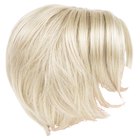
How to Get Glue Residue Off Your Lace ...

How to Apply Full Lace Wigs
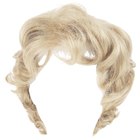
How to Use Wig Tape
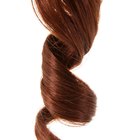
How to Style a Kanekalon Wig

How to Attach a Wig to a Bald Head

How to Apply Lace Wigs With No Tape or ...

How to Sleep in Your Wig

How to Make Extensions Smooth & Silky ...
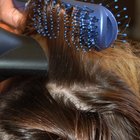
How to Put in a 27-Piece Hair Weave

How to Take the Frizz Out of a ...

How to Connect Wig Clips

Different Kinds of Hair Glue

How to Re-Curl a Synthetic Wig

The Easy Way to Remove Weaving Glue ...

What Is Synthetic Hair Made Of?

How to Raise the Ear Tabs on Wigs Up ...

How to Avoid Itching With a Wig
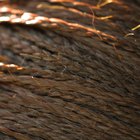
How to Braid Yaki Kanekalon Hair

How to Blend a Lace Front Wig
References
Writer Bio
Kalynn Bayron has been writing professionally since 2008. She has contributed to Shakespeare Squared and offers fashion and relationship advice through various online publications. Bayron holds a professional certificate in graphic design from Sessions College for Professional Design.
Photo Credits
Jupiterimages/Polka Dot/Getty Images